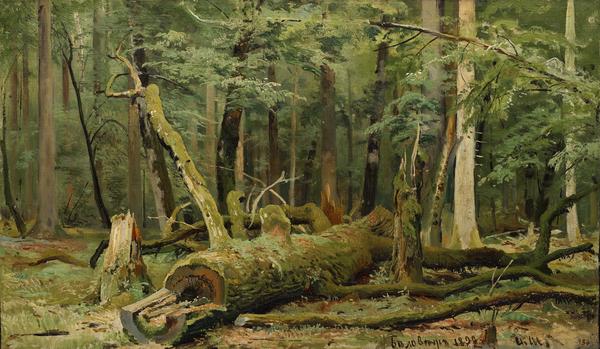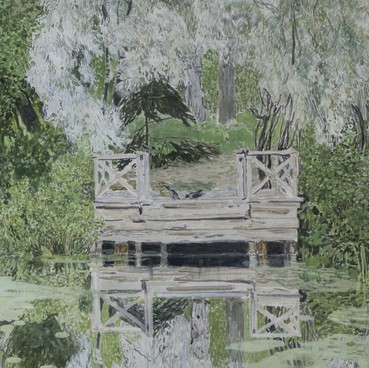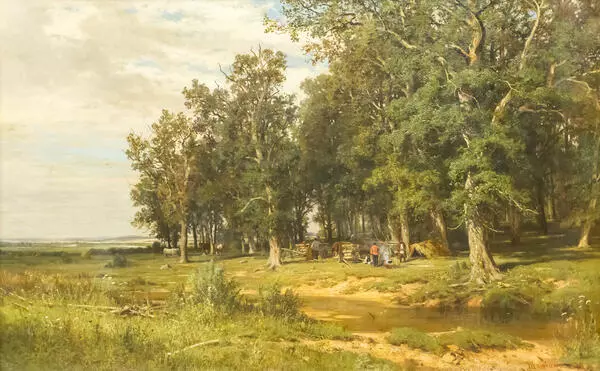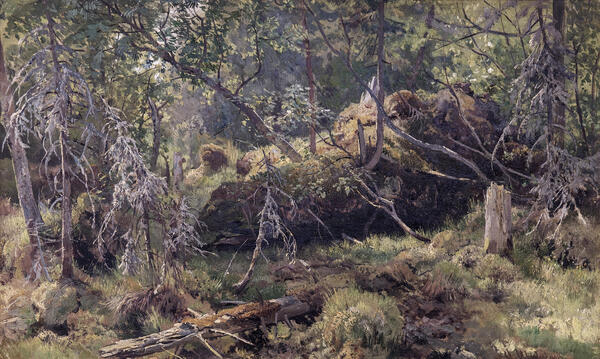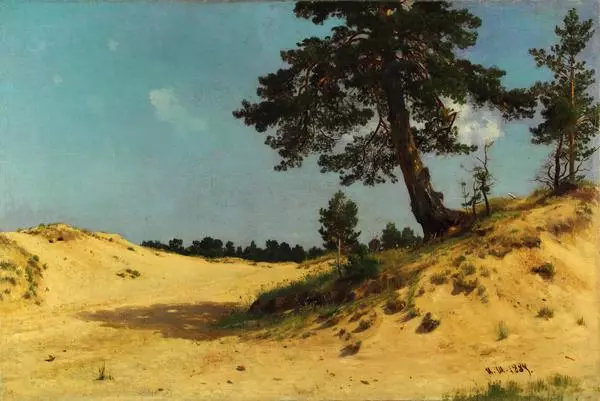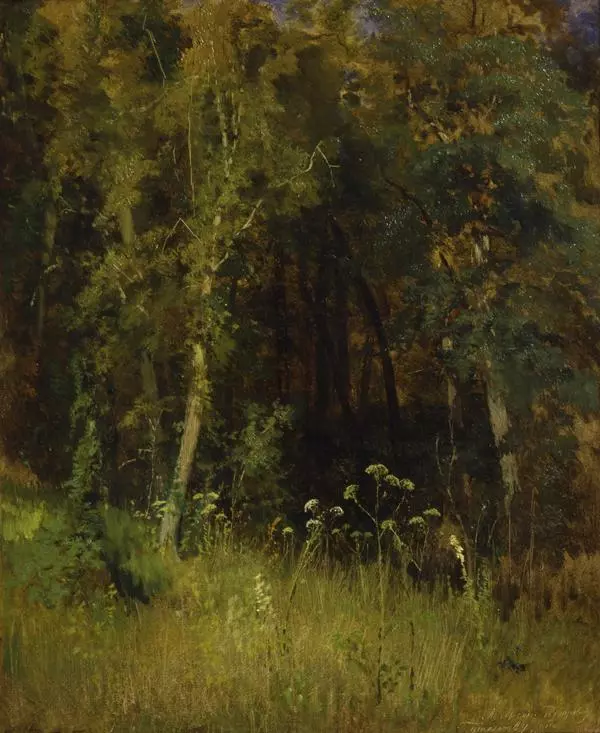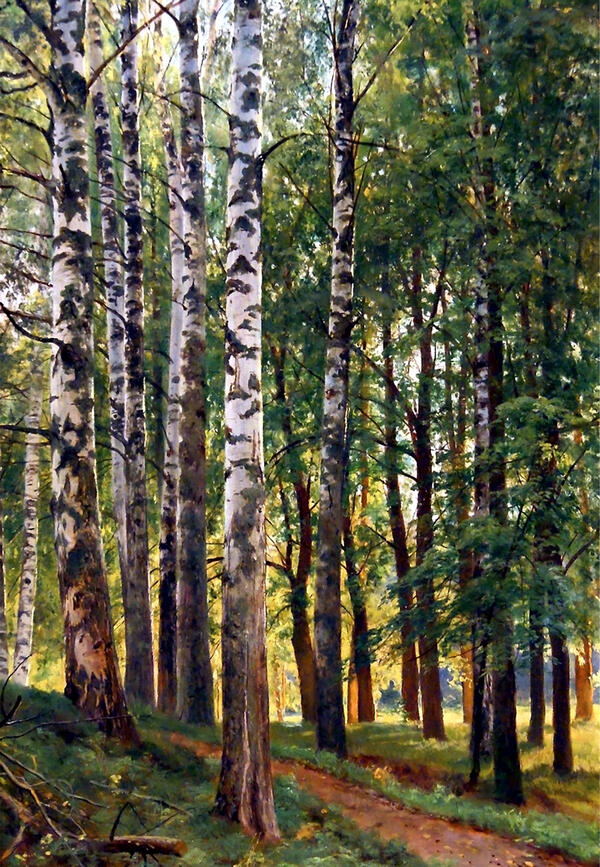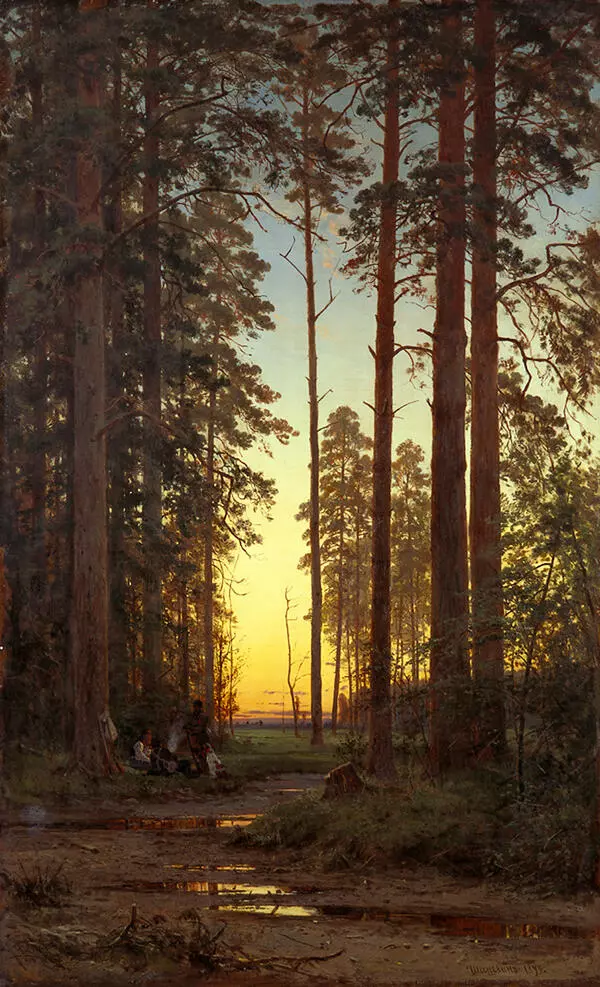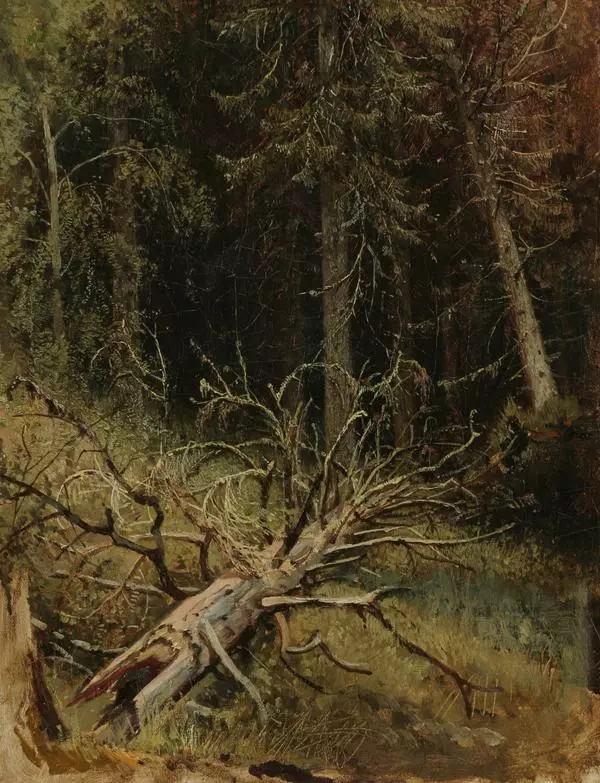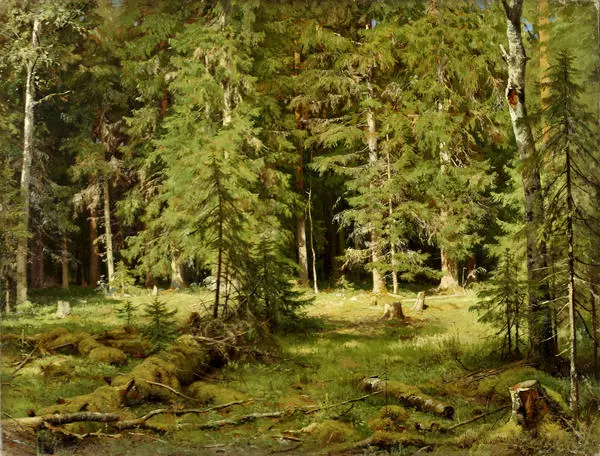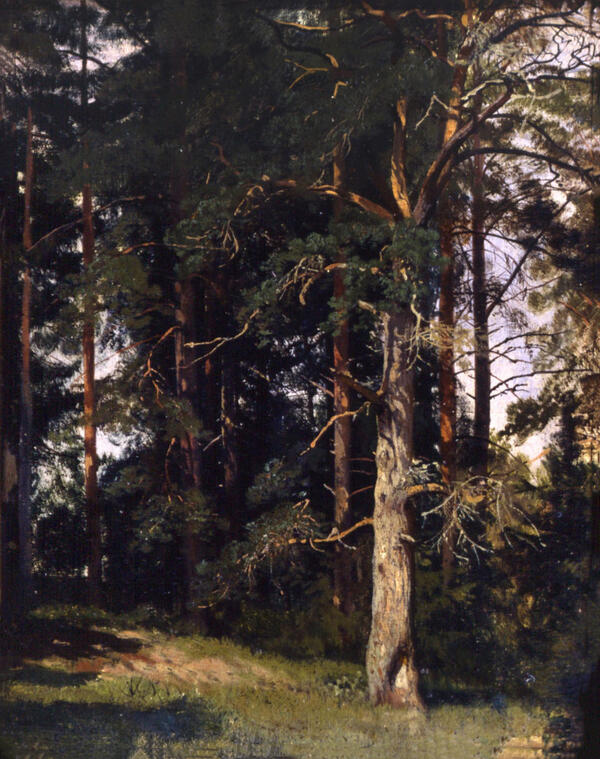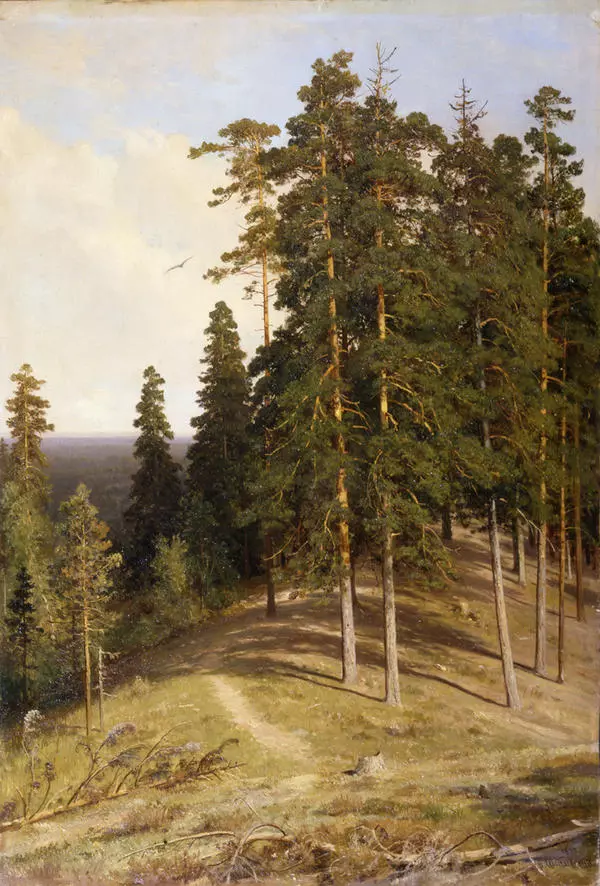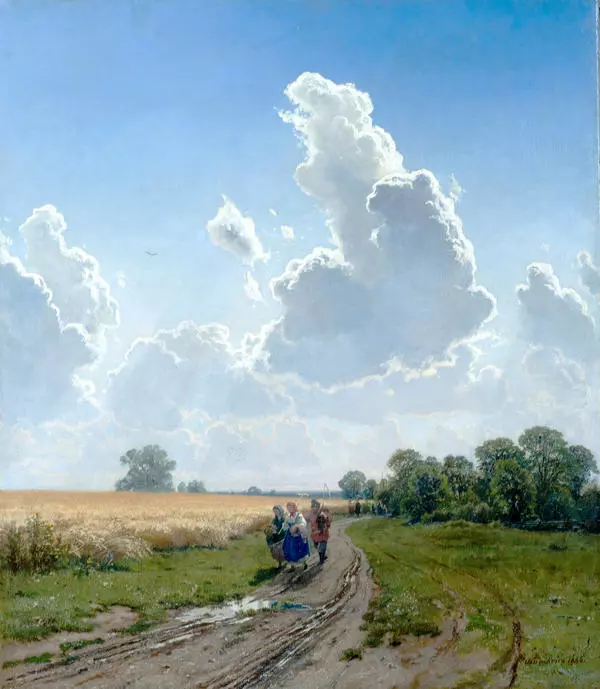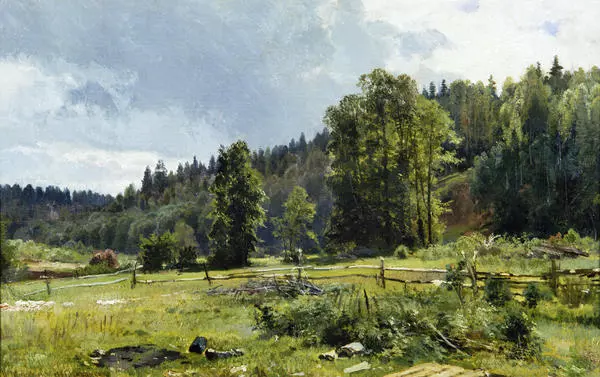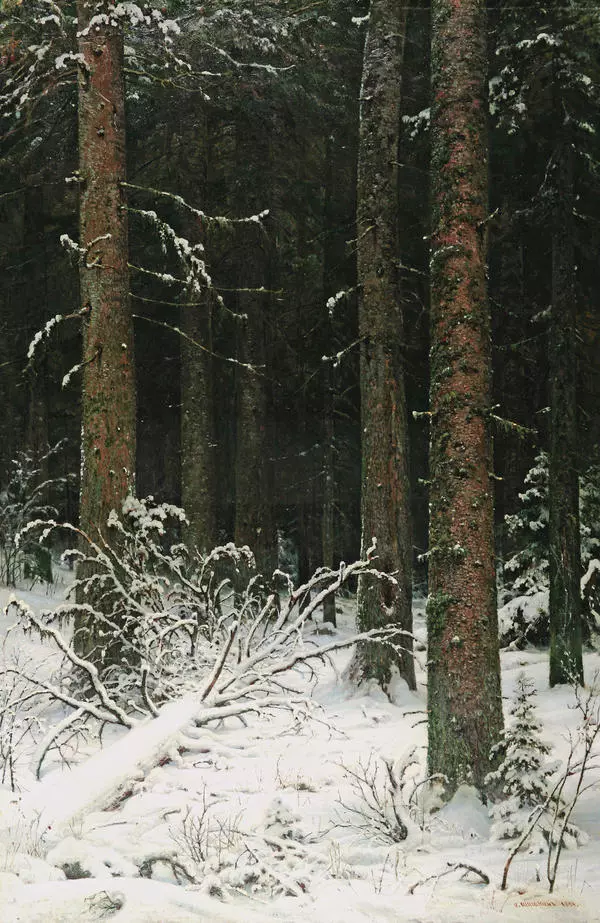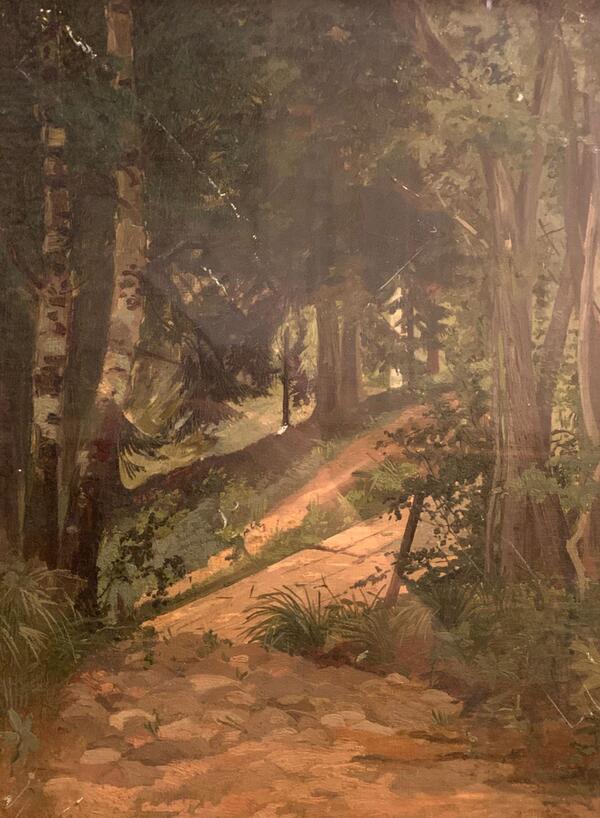Ivan Shishkin painted his ‘Felled Oak-Tree’ study during his trip to the Bialowieza Forest in 1892. Despite the broad-brush free treatment and apparent incompleteness, the artist accurately conveyed all the living details of the forest: soft velvety moss, prickly and hard fir needles, damp trunk of the felled oak-tree. With masterly skill, he conveyed the depth of the space, the shadow in the depth of the forest, dense forest air.
The artist’s contemporaries said that before starting a painting, Shishkin would feel every grass blade, every leaf with his fingers. He studied the subjects of his future paintings thoroughly and sought to picture them as accurately as possible. His landscapes were highly praised by his like-minded colleagues from the Association for Itinerant Art Exhibitions. Ivan Kramskoy wrote about Ivan Shishkin: “I think he is the only one among us who knows landscape painting in a scholarly way <…> Shishkin is a milepost in the development of Russian landscape painting; he is a whole school in one man.”
The artist traveled extensively all over Russia in search of interesting sights. But it was by chance that fate brought him to Bialowieza Forest. At the 20th traveling exhibition, Shishkin presented his work entitled “A Summer Day”. Emperor Alexander III liked the canvas so much that His Majesty wanted the artist to go to the Bialowieza Forest to paint “the real forest that he cannot see here”. The artist was accompanied by tsar’s men on his trip. They were a great nuisance to Shishkin by trying to anticipate his every wish and movement. Yakov Minchenkov wrote in his book ‘Memoirs of the Itinerants’: ‘They would not leave him alone even when he was doing his studies. One day, he was painting a forest with a half-dried tree in the foreground. The forest manager came up to him. He looked at the study and asked, “Could this semi-dried tree be removed from the study?” Shishkin was surprised, and the manager explained, “You will take the painting to St. Petersburg, won”t you? They are going to look at it there and say, “Some manager! He brought the forest to the condition that trees started drying.” The story got around as a joke, although the author of the memoirs did not specify what answer Shishkin gave to the official.
The painter brought 58 studies from Bialowieza Forest. In January 1893, he presented them at his solo show in St. Petersburg. Shishkin always had high regard for studies and believed that they were important not only for the artist, but also for the viewers. After the exhibition there were discussions that the painter “has not run dry, has not lost steam and is a true virtuoso of colour”.
The artist’s contemporaries said that before starting a painting, Shishkin would feel every grass blade, every leaf with his fingers. He studied the subjects of his future paintings thoroughly and sought to picture them as accurately as possible. His landscapes were highly praised by his like-minded colleagues from the Association for Itinerant Art Exhibitions. Ivan Kramskoy wrote about Ivan Shishkin: “I think he is the only one among us who knows landscape painting in a scholarly way <…> Shishkin is a milepost in the development of Russian landscape painting; he is a whole school in one man.”
The artist traveled extensively all over Russia in search of interesting sights. But it was by chance that fate brought him to Bialowieza Forest. At the 20th traveling exhibition, Shishkin presented his work entitled “A Summer Day”. Emperor Alexander III liked the canvas so much that His Majesty wanted the artist to go to the Bialowieza Forest to paint “the real forest that he cannot see here”. The artist was accompanied by tsar’s men on his trip. They were a great nuisance to Shishkin by trying to anticipate his every wish and movement. Yakov Minchenkov wrote in his book ‘Memoirs of the Itinerants’: ‘They would not leave him alone even when he was doing his studies. One day, he was painting a forest with a half-dried tree in the foreground. The forest manager came up to him. He looked at the study and asked, “Could this semi-dried tree be removed from the study?” Shishkin was surprised, and the manager explained, “You will take the painting to St. Petersburg, won”t you? They are going to look at it there and say, “Some manager! He brought the forest to the condition that trees started drying.” The story got around as a joke, although the author of the memoirs did not specify what answer Shishkin gave to the official.
“A Summer Day”, 1891, the painting presented at the 20th itinerant exhibition that overwhelmed the Emperor “A Summer Day”, 1891, the painting presented at the 20th itinerant exhibition that overwhelmed the Emperor
The painter brought 58 studies from Bialowieza Forest. In January 1893, he presented them at his solo show in St. Petersburg. Shishkin always had high regard for studies and believed that they were important not only for the artist, but also for the viewers. After the exhibition there were discussions that the painter “has not run dry, has not lost steam and is a true virtuoso of colour”.
The painter brought 58 studies from Bialowieza Forest. In January 1893, he presented them at his solo show in St. Petersburg. Shishkin always had high regard for studies and believed that they were important not only for the artist, but also for the viewers. After the exhibition there were discussions that the painter “has not run dry, has not lost steam and is a true virtuoso of colour”.

